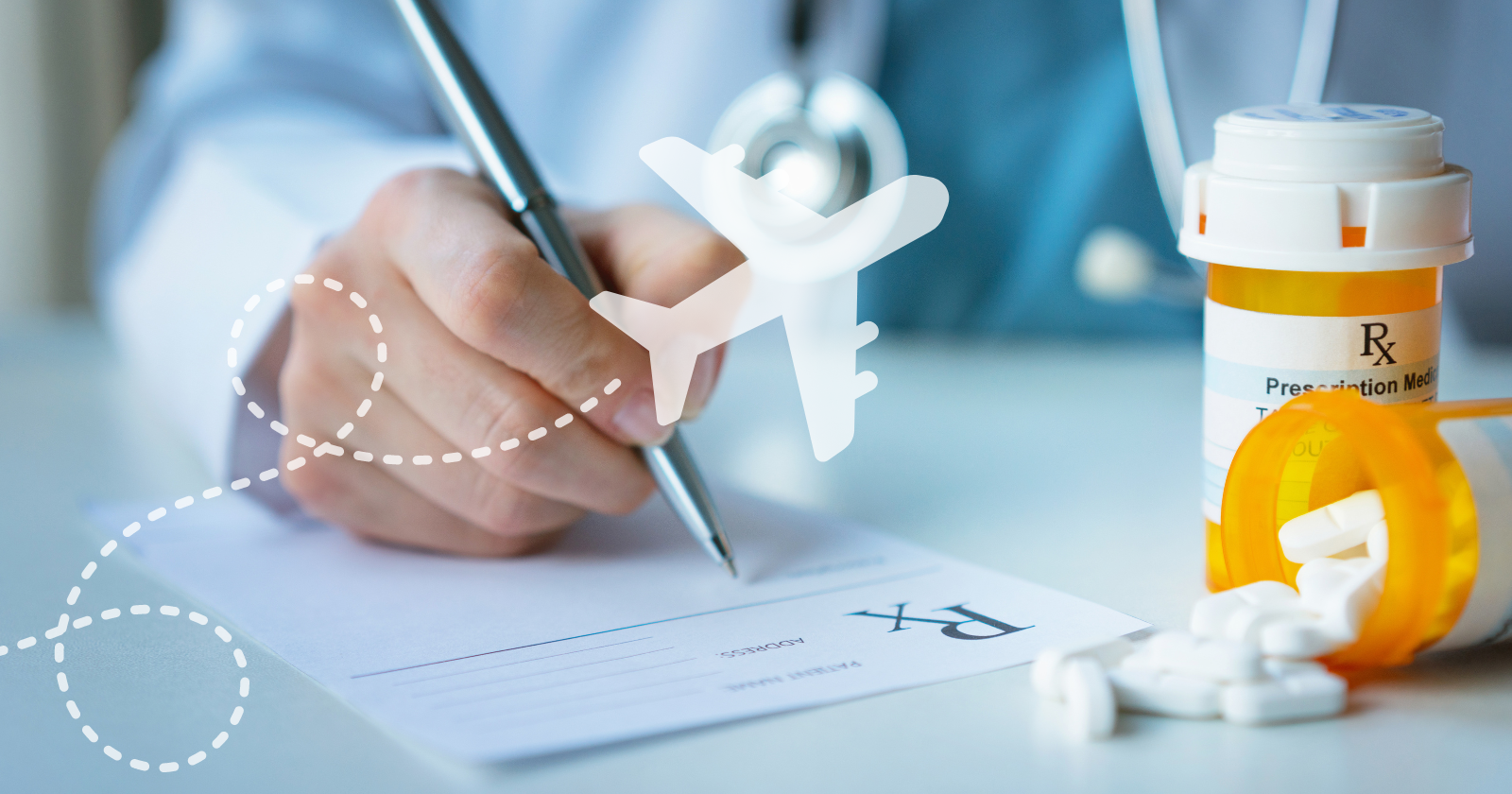Navigating the world of air travel can be daunting, especially when it comes to flying with medications. As a travel and luggage expert, I understand the challenges and uncertainties surrounding the process. This comprehensive guide will help you prepare for your journey, covering everything from packing prescription drugs to dealing with security and customs. Let’s get started!
Understanding Airport and Airline Regulations When Flying With Medications
Before you pack your medications and head to the airport, it’s essential to familiarize yourself with airport and airline regulations to ensure a smooth travel experience.
Carry-on vs. Checked Luggage
When flying with medications, it’s generally recommended to keep them in your carry-on luggage. This helps prevent loss or damage and ensures your medications are readily accessible during your flight.
Liquid Medications and the 3-1-1 Rule
The TSA’s 3-1-1 rule for liquids, gels, and aerosols in carry-on luggage also applies to liquid medications. However, you can bring medically necessary liquids in quantities larger than 3.4 ounces (100 milliliters) if you declare them at security checkpoints. When flying with medications, these items will be subject to additional screening.
Prescription Labels and Documentation
It’s a good idea to have your medications in their original containers with prescription labels clearly visible. While this is not a strict TSA requirement, it can help expedite the screening process and avoid potential issues with customs officials in your destination country.
Additionally, carry a copy of your prescription or a letter from your healthcare provider outlining your medical conditions and the medications you’re taking. This can be particularly helpful if you’re traveling internationally or if your medications are controlled substances.

Packing Tips When Flying With Medications
Proper packing is crucial when it comes to flying with medications. Here are some tips to help you stay organized and protect your medications during transit.
Use a Dedicated Medication Organizer
A medication organizer, such as a pillbox or a zippered pouch, can help keep your prescriptions separate from other items in your luggage. This makes it easier to locate and access your medications during your trip.
Protect Fragile Medication Containers
If your medications come in fragile containers like glass vials or bottles, use bubble wrap or padded sleeves to protect them from damage when flying with medications.
Keep Medications in a Cool, Dry Place
Some medications are sensitive to heat and humidity. To maintain their effectiveness, keep them in a cool, dry place, such as an insulated pouch or a temperature-controlled section of your carry-on luggage.
Airport security and customs can be intimidating, but with the right preparation, you can breeze through the process.
Inform TSA Agents About Your Medications
When you reach the security checkpoint, inform the TSA agent about any medications or medical supplies you’re carrying. This will help them understand why you have these items and allow for smoother screening.
Be Prepared for Additional Screening
When flying with medications, your meds may be subject to additional screening, such as X-ray, visual inspection, or testing for explosives. Remain calm and cooperative during the process. The more prepared and organized you are, the faster the screening will be.
Customs Declarations and Controlled Substances
When traveling internationally, be prepared to declare your medications on your customs declaration form. Some countries have strict regulations regarding the import of prescription drugs, especially controlled substances. Research the specific requirements for your destination country and carry the necessary documentation to avoid any issues.
Managing Medications During Your Flight
Once you’re on board, it’s crucial to ensure your medications are readily accessible and properly managed throughout the flight.
Storing Medications in the Overhead Bin or Under the Seat
Store your carry-on luggage containing medications either in the overhead bin or under the seat in front of you. This way, you can easily access your medications during the flight if needed.
Taking Medications on Schedule
Keep track of your medication schedule and adjust it to the local time at your destination, if necessary. This can help you maintain consistency and prevent potential health complications. If you’re unsure how to adjust your medication schedule, consult your healthcare provider before your trip.
Staying Hydrated
Air travel can be dehydrating, which may affect how your body processes medications. Make sure to drink plenty of water during your flight to stay hydrated and ensure your medications work effectively.
Arriving at Your Destination
Once you’ve arrived at your destination, there are still a few considerations to keep in mind when it comes to managing your medications.
Safeguarding Your Medications
When you reach your accommodation, after flying with medications, store your medications in a safe and secure location. If your room has a safe, consider using it to protect your medications from theft or accidental access by others.
Refilling Prescriptions Abroad
In case you need to refill your prescription while traveling, research local pharmacies and medical facilities before your trip. Carry a copy of your prescription and be prepared to provide the generic name of your medication, as brand names may vary in different countries.

Frequently Asked Questions (FAQs) on Flying with Medications
To help you further prepare for flying with medications, we’ve compiled a list of frequently asked questions and answers. These cover some of the most common concerns travelers have when it comes to managing their prescriptions while traveling by air.
Can I bring over-the-counter (OTC) medications in my carry-on luggage?
Yes, you can bring over-the-counter medications in your carry-on luggage. Similar to prescription medications, it’s advisable to keep them in their original packaging to avoid confusion and make them easily identifiable during security screenings. If the OTC medications are in liquid, gel, or aerosol form, they must adhere to the TSA’s 3-1-1 rule or be declared separately if they exceed the 3.4 ounces (100 milliliters) limit.
How should I handle medications that require refrigeration during my flight?
If your medication requires refrigeration, use an insulated pouch or container with cold packs to maintain the appropriate temperature. Before your flight, check with your airline regarding their policies for carrying cold packs or gel packs. Some airlines may also provide refrigeration services for medications upon request, so it’s worth contacting them to inquire about this option.
What should I do if my medication is lost or stolen while traveling?
In the unfortunate event that your medication is lost or stolen, having a backup plan is essential. Carry a copy of your prescription and your healthcare provider’s contact information. This will make it easier to obtain an emergency refill from a local pharmacy or medical facility. Also, consider purchasing travel insurance that covers the cost of replacing lost or stolen medications, as this can provide additional peace of mind.
Additional Resources
If you are looking for more tutorials, walkthroughs, and troubleshooting on TSA, here are some additional posts about TSA:
Flying With Medications – Conclusion
Flying with medications can be a stress-free experience with proper planning and organization. By understanding airport and airline regulations and packing your medications carefully, you can ensure a smooth and worry-free journey. In addition, navigating security and customs, managing your medications during the flight, and taking precautions at your destination, will make your travels easier.
Happy travels, my friends.
